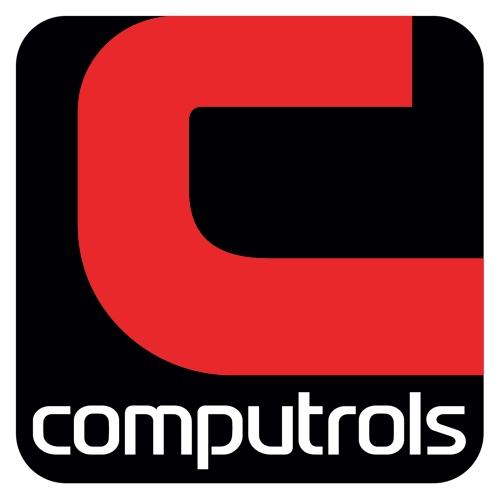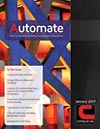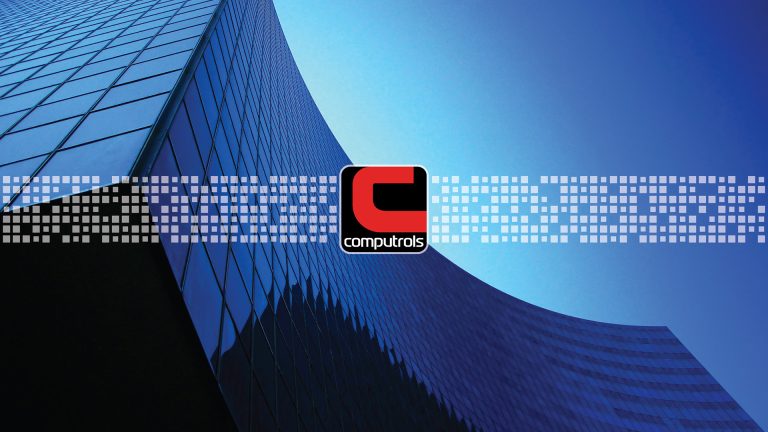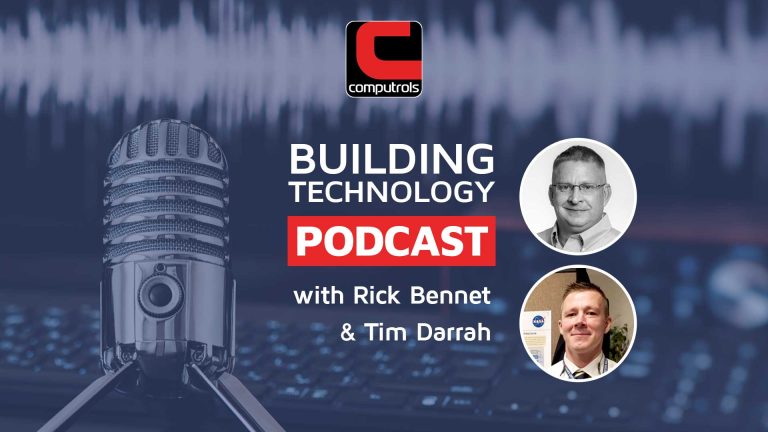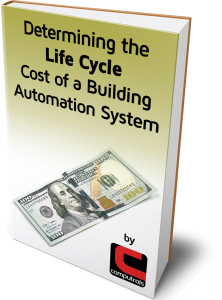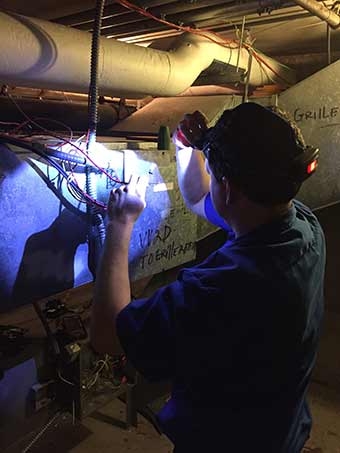 Recently, FacilitiesNet published the article titled “7 Tips For Selecting a Building Automation System.” The piece walks readers through considerations that they should take into account when replacing their current BAS, including how facility managers will interact with the system. We found the article to be helpful and related to our own recommendations. Below, we have addressed each of their recommendations from Computrols’ perspective.
Recently, FacilitiesNet published the article titled “7 Tips For Selecting a Building Automation System.” The piece walks readers through considerations that they should take into account when replacing their current BAS, including how facility managers will interact with the system. We found the article to be helpful and related to our own recommendations. Below, we have addressed each of their recommendations from Computrols’ perspective.
1. People are more important than technology. Buy-in from the operating engineers is crucial to a successful upgrade. It’s important to involve operating engineers in the selection, design, and installation of the new BAS. Ideally, bringing the engineer to visit buildings with the prospective BAS installed will allow them to demo it first hand, without the manufacturer or installation contractor present.
Keep in mind that a balance must be struck between the necessary sophistication and complexity of the BAS and the needs of the operator. Once all the design engineers and installers have gone home, the operator will be left to manage the system, to work out its inevitable quirks. The best performing systems are those where the BAS has been designed with the operators in mind.
Everything Computrols creates is done so with the end user in mind. Computrols builds simplicity into everything that we do while supplying the power and technology needed to operate a building efficiently. We offer the industry’s only lifetime warranty on controllers we manufacture, making controller replacement as simple as possible in the event of equipment failure. Additionally, Computrols’ flagship building automation software (CBAS) is intuitive enough for the end user to manage the system without technical support. We build our hardware and software so that our clients can be “self-performers,” meaning that editing and creating schedules, troubleshooting, changing set-points and writing sequences of operations can be easily accomplished through CBAS.
We are happy to provide a reference list to any prospective customers and we always encourage our prospective customers to visit our current partners’ buildings to see our system in action.
2. BAS technology is evolving quickly, keeping pace with data network technology. Even the fastest BAS network infrastructure won’t last for 25 years like a chiller. Instead, the cabling infrastructure of a BAS installed even five, and certainly 10 years ago, is likely already outdated. Software, firmware, hardware, and networking components all evolve over time, while products and lines of products become obsolete and can be unavailable for repair or replacement, as a new generation of BAS arrives every five to seven years. A building’s capital plan should include gradual upgrades every few years to so that a full-blown, costly BAS overhaul isn’t necessary every decade.
Computrols understands that technology is ever-evolving. Instead of subjecting clients to constant upgrades due to planned obsolescence, Computrols believes in building long-term partnerships. Not only do we offer a lifetime warranty on all of our controllers, but we offer a buyback program for our old controllers when our clients elect to upgrade to our latest technology. While many competitors intentionally obsolete products in order to gouge existing customers, Computrols has never obsoleted a controller. In fact, Computrols even supports many of our competitors’ legacy products. These are just a few examples of how Computrols delivers unprecedented, long-term value to building owners and operators.
3. Not all network infrastructure is created equal. No one thinks about the network infrastructure when they look at a BAS. But that infrastructure is like a car’s transmission: If it is not high quality and in good working order, it’s not going to get you where you want to go. Buying the fastest/best backbone network infrastructure affordable today will provide the most flexibility for future incremental upgrades. For example, specifying CAT5E or CAT6 cable (today’s highest speed Ethernet network) will allow the network speed to be increased down the road simply by changing the components on each end rather than having to change out all the cabling. Today’s higher cable and network cost is incrementally small in relation to the costs of the labor and re-wiring that will be required to bring the BAS up to speed tomorrow.
Computrols understands the importance of a network backbone. We were the first manufacturer in the industry to design and manufacture a controller with a CAT5 terminal on board. We are early adopters and pioneers in the industry, always looking to the future. Our next generation of controllers will look at technology trends to determine the best path for our future products. With that said, backwards and forwards compatibility is a huge part of what we do. We plan on staying at the forefront of tech while ensuring our future products can be used with legacy infrastructure/products.
4. The front-end interface is the building block of a successful BAS upgrade. Just as all networks aren’t created equal, neither are all interfaces. The front end of the BAS, or the hardware and software that the operator interfaces with on a regular basis, whether controlling the system from a remote terminal (more typical today) or from the BAS interface itself, is the single source of communication with the BAS. Things to look for include:
Responsiveness. Network architecture and the front-end interface need to be as fast as an iPad. Software must refresh quickly. If it’s slowed by delays, operators will stop using it.
Quality of graphics. The visual presentation of the software and hardware should be appealing and intuitive.
Programming Language. If the programming interface is presented only in code, the operating engineers are going to be hesitant to make any changes, but if they’re presented with object-oriented language, it’s much easier to make the necessary changes and adjustments. That being said, a more sophisticated operating engineer is likely to make tweaks to any programming interface. Know the limits of your operating engineer when choosing the programming language.
Remote mobile access computing, or the ability to use the Internet to connect to a building’s BAS from a remote location through a secure portal, provides an additional front-end interface option for the building operator. While this may not be ideal for every building, it can provide an added level of flexibility and reliability for any BAS.
Considering that Computrols builds simplicity into all of our hardware and software, it’s no surprise that our front-end interface is built with building engineers in mind. We strive to manufacture the most reliable hardware and intuitive software on the market because we want each property to be autonomous when operating its BAS.
CBAS offers live values for all points on the system, meaning that system data updates automatically without the operator needing to refresh. CBAS also offers both a graphic and text view so the system operator can choose how they view the data, and graphics can be created in 2D or 3D based on the end user’s needs. Regarding programming language, Computrols utilizes if/then logic instead of traditional coding in CBAS. An example of if/then logic in CBAS could be, “IF outside air is 85 degrees, THEN start the chiller.” This is yet another way that Computrols builds simplicity into our solutions.
Finally, Computrols offers CBAS Web, the web-based version of our flagship software. CBAS Web enables the operator to access the BAS remotely from any web browser, creating more flexibility for building engineers to view and manipulate the system on the go.
5. There are varying degrees of openness. Most of today’s BAS systems are called “open,” but this term is very misunderstood. In an “open system,” the BAS device and network share a common communications protocol, like BACnet or LonWorks, with other building automation systems. Most BAS, though, especially those made by large equipment manufacturers, have proprietary software on the front end or come packaged in a proprietary bundled delivery system. This means that a limited number of technicians and contractors can modify or upgrade the BAS, making it more difficult to switch both systems and servicing vendors.
Additionally, the product lines that the big companies are going to be the most competitive on will be those that solidify their position in the building long term. While these systems will be functional, what’s saved upfront by bundling the software and equipment at the time of the upgrade may be lost in future options. Typically, the larger brand name BAS will also have different tiers of systems. They will often license out a lower version or previous generation of their systems to smaller contractors for less.
Being an educated consumer means knowing what your building’s needs are, as it may be better to go with systems that are less or more open, depending on the personnel working with your BAS or previous experience with certain vendors and manufacturers.
Computrols’ products are able to natively communicate with our industry’s open protocols, as well as many of the industry’s proprietary protocols. This enables us to provide truly integrated solutions to customers that are looking for an alternative to their current BAS. Our products can communicate via industry-standard protocols such as BACnet, Modbus and LonWorks, but the ability to communicate with some of our competitors’ “legacy” products offers a more affordable, integrated solution.
6. Once installed, the system must be maintained. BAS rely on sensors to operate. Once they sense something, they respond to the variable, either temperature, humidity, flow rate, status, pressure, or another digital measurement. Therefore, the system only operates efficiently when its sensors are calibrated. The problem is that no one calibrates their sensors. Even when vendors promise calibration on a maintenance contract, it is rarely done. While it is possible for the operating engineer to calibrate them, this skill must be learned and added to the operator’s current maintenance regimen. It’s critical to be diligent in making sure that all items on the service contract, including calibrated sensors, are executed properly on an annual basis. If not, the incremental cost to upgrade down the road could be much higher because things aren’t working or haven’t been maintained.
Computrols understands the importance of complete system maintenance on a regular basis. While Computrols does not manufacture sensors, we do offer maintenance on all end devices. We customize our maintenance agreements on a case-by-case basis, ensuring each facility is getting what it needs to run efficiently. We also provide service reports following each visit, so we are fully transparent regarding what work is being executed.
7. To get the best results, commission before and after the BAS installation. One reason it can be intimidating to plan a BAS upgrade is the design-build model of the project, as each contractor sells and installs systems for one or a few manufacturers exclusively. While there are benefits to the single-source responsibility inherent in this model, it can lack objectivity. For even when competitively priced, building automation systems can differ in their services, software, hardware, interface features, and sequences of operation.
An independent energy audit and existing building commissioning can help isolate and identify areas that could be improved with a BAS upgrade. These services will help identify which BAS features will benefit the facility most, based on existing systems, current building operators, local climate, and more, while putting some real numbers to a desired return on investment. Ultimately, obtaining a third party expert opinion can arm the facility manager with knowledge of the facility’s needs and requirements and therefore, how to make a real apples-to-apples comparison of BAS options.
Setting realistic expectations up front means that everyone will understand the operational goals of the new or replacement BAS. This knowledge can help craft the appropriate request for proposal (RFP) and allow the facility manager to explore upgrades to supporting equipment, which can be accomplished more cost effectively prior to BAS implementation to substantially increase the benefits of the new automation system. For example, upgrading the VFDs, pumps, air handler, or components of these systems before the implementation will allow the building to get the most benefit from sophisticated algorithms and sequences.
Commissioning the BAS system after it’s been installed and the operators have been trained on it will provide the insurance that the time, money, and effort spent on the new implementation has paid off. Because it’s easy for something to go wrong with the dampers, actuators, sensors, and overall sequences of operation, testing these areas to make sure the system is programmed correctly and executing functions appropriately can be the difference between a successful implementation and an inefficient new or upgraded BAS.
Remember that a BAS is a computer program with electronic operators doing what a human would otherwise do manually. Therefore, the BAS will only be as good as the equipment it’s controlling and the people controlling it. Being a highly effective BAS buyer means understanding this principle and knowing the building and its operators well enough to meet all their needs and operational goals, beginning with the RFP process through installation and future maintenance.
Choosing a new BAS is no easy task. Balancing facility needs with the realities of operating in an economically-friendly way is difficult, and with a number of different companies offering similar solutions, choosing the right BAS can seem like a monumental task. While most of the big-box companies are simply trying to sell the newest product, Computrols is focused on the solution.
For facilities looking at an alternative to their frustrating BAS, choosing Computrols is an investment towards your building’s long-term efficiency. Our lifetime warranty on controllers is simply unmatched; we stand behind our quality for as long as the building has Computrols’ controllers. By offering the highest-quality hardware on the market, we save customers the cost of upgrading equipment throughout the years. By offering the most simplistic software on the market, we eliminate the need for costly maintenance agreements. By creating a system with the end-user in mind, we eliminate on-going stress and frustrations for building engineers caused by a system with planned deficiencies.
We invite you to give us a call when planning your next BAS project. We have partners from coast to coast that have experienced the Computrols difference, and we would love the opportunity to earn your business.
